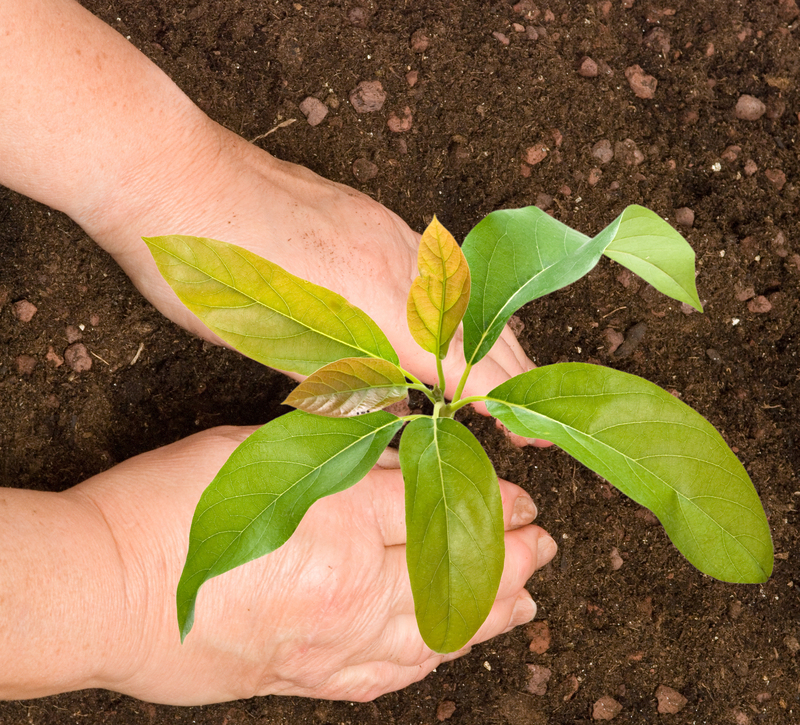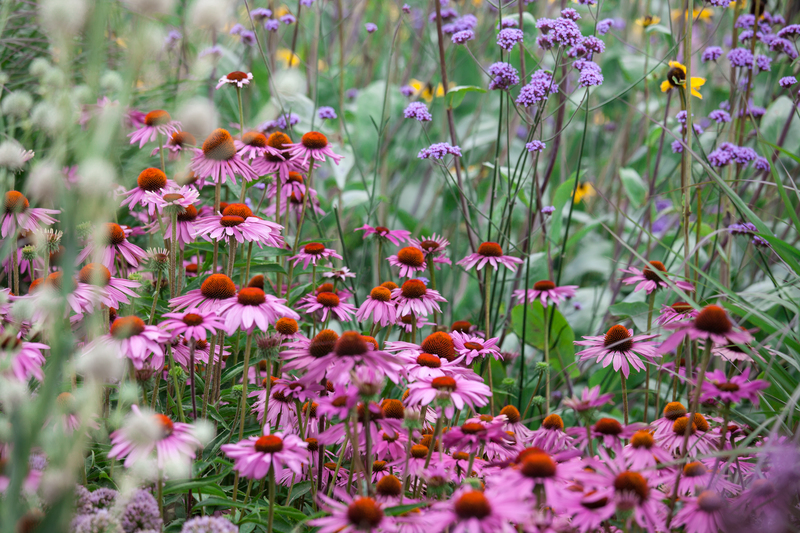Empowering Your Garden to Face Winter's Cold Snap
Posted on 16/09/2025
Empowering Your Garden to Face Winter's Cold Snap
Winter can be a challenging time for gardeners. Frost, icy winds, and fluctuating temperatures threaten even the healthiest of plants. But with the right preparation, you can empower your garden to face winter's cold snap bravely and emerge vibrant in spring. This comprehensive guide explores practical, time-tested strategies to safeguard your landscape, harnessing both classic wisdom and modern solutions. If you want your garden to thrive despite the chill, read on!
Understanding Winter's Impact on Your Garden
Cold weather brings a range of hazards, from frost heave to desiccating winds and waterlogged soil. The first step in preparing your garden for winter's cold snap is to understand how low temperatures affect your plants. Each species possesses unique hardiness levels and requirements, making tailored protection essential.
Key Winter Stressors for Plants
- Frost Damage - Ice crystals form in plant cells, puncturing membranes and causing tissues to collapse.
- Desiccation - Dry winter winds and sun cause moisture loss faster than roots can provide, leading to "winter burn."
- Root Injury - Freeze-thaw cycles can lift young plants out of the soil or split root systems.
- Pests & Disease - Damp conditions and low temperatures foster certain fungi and harbor overwintering insects.

Garden Preparation: Strategic Steps for Winter's Chill
Proper winter garden preparation lays a strong foundation. Here are essential steps to bolster your garden's resilience:
1. Clean and Prune
- Clear fallen leaves, dead plant material, and weeds to thwart pests and disease.
- Prune dead or damaged wood to prevent winter breakage and encourage healthy regrowth.
2. Mulch Generously
- Apply 2-4 inches of organic mulch (straw, bark, shredded leaves) to buffer temperature swings and conserve soil moisture.
- Focus on root protection for perennials, bulbs, and shallow-rooted shrubs.
- Tip: Avoid mulching directly against plant stems to prevent rot.
3. Water Wisely
- Thoroughly water beds before the ground freezes--moist soil stays warmer and supports root health.
- Reduce frequency as plants become dormant, but irrigate during winter dry spells if possible.
Protecting Plants from Frost and Freeze
The single biggest threat to winter gardens during a cold snap is frost. Protecting tender and even hardy plants from severe temperature drops makes all the difference:
Covering Techniques
- Use frost blankets, horticultural fleece, or even old bedsheets to trap ground heat and shield plants overnight.
- Cloche covers, milk jugs, or glass jars make mini-greenhouses for vulnerable seedlings.
- Remember to remove covers on warmer days to allow sunlight and ventilation.
Barrier Protection
- Set up windscreens or burlap wraps around evergreens and roses to block drying winter winds.
- Use row covers on veggie beds to extend the harvest season and shield crops from frost.
Lifting & Bringing Indoors
- Lift tender bulbs (dahlias, cannas, gladiolus) before the first hard frost; store in a cool, dry place until spring.
- Pot up container plants and move them into a garage, porch, or greenhouse for added warmth.
Choosing the Right Plants for Winter Success
Empowering your garden to face winter's worst starts with growing suitable plants. Selecting resilient varieties boosts your landscape's cold tolerance and year-round beauty.
Hardy Plant Choices
- Evergreens: Boxwood, holly, pine, and juniper provide winter structure and color.
- Cold-Hardy Perennials: Hellebores, ornamental grasses, sedum, and asters return reliably after deep freezes.
- Winter-Flowering Shrubs: Witch hazel, camellia, and winter jasmine add early color and fragrance.
- Root Crops & Greens: Kale, spinach, leeks, and parsnips can be harvested deep into winter with mulch or row cover protection.
Plant Placement
- Position fragile plants in microclimates with south-facing sun and windbreaks (walls or hedges).
- Group container plants together to create a communal 'heat island' for added warmth.
Soil Preparation: The Foundation of Winter Survival
Healthy soil is the foundation of a resilient garden capable of enduring winter's cold snap. Take these essential steps:
Improve Drainage
- Avoid planting in low-lying spots where water accumulates and freezes.
- Amend heavy clay soils with organic matter to improve structure and drainage.
- Soggy soils may freeze solid and damage roots--raise beds if necessary.
Feed the Soil
- Add compost or well-rotted manure in autumn to deliver nutrients and encourage soil life over winter.
- Consider a slow-release organic fertilizer to give plants a head-start in spring.
Protecting Lawns During a Cold Snap
Grass can seem tough, but freezing temperatures, snow mold, and ice can take a toll. Here's how to empower your lawn through a harsh winter:
- Cut grass short for the final mow to discourage mold and rodents.
- Aerate the lawn in autumn to relieve compaction and improve drainage.
- Apply a potassium-rich fall fertilizer to strengthen roots for winter resilience.
- Keep pathways clear of snow and ice with non-toxic deicers to prevent plant and soil burn.
Winter Gardening: Extending the Harvest and Enjoyment
Just because winter bites doesn't mean gardening must stop! Empower yourself--and your garden--with these creative ways to enjoy the cold season:
Winter Vegetables in the Kitchen Garden
- Use cold frames, tunnel cloches, or mini-greenhouses to grow hearty greens like spinach and lettuce into winter.
- Mulch root crops in situ and harvest carrots, parsnips, and leeks straight from the soil.
- Try overwintering garlic and onions for early spring harvests.
Winter Interest with Ornamentals
- Plant berries (holly, viburnum, cotoneaster) for color and wildlife food.
- Incorporate ornamental grasses, seed heads, and barks for texture and beauty amidst the frost.
- Hang feeders and water sources to attract birds and pollinators even in snow.
Winterizing Tools, Pots, and Garden Equipment
Empowering your garden means caring for your tools and equipment as well. Follow these maintenance tips to keep everything ready for spring action:
- Clean, sharpen, and oil shears, pruners, and mowers to prevent rust.
- Store garden hoses indoors and drain all water to prevent splitting from freeze.
- Empty and scrub pots to eliminate overwintering pests and diseases.
- Check and repair fencing, trellises, and supports that may later collapse under snow or wind.
Combatting Pests and Disease in the Off-Season
Many garden pests and pathogens make their homes in plant debris, bark, or soil over the winter. Empower your next season with preventative measures:
- Remove and destroy diseased plant material before winter sets in.
- Rake up and compost (when appropriate) fallen leaves and spent crops.
- Inspect tree bark and branches for egg masses or insect colonies and remove if found.
- Treat garden beds with dormant oil or sulfur sprays if persistent pest or fungal problems exist.
Empowering Your Garden with Technology
Modern technology offers innovative ways to protect gardens during a cold snap:
- Install smart soil moisture sensors to monitor winter dryness and prevent over/under watering.
- Use weather apps and frost alerts to anticipate sudden drops and deploy plant covers in time.
- Employ greenhouse heaters and LED grow lights for container plants kept indoors.

Frequently Asked Questions
1. What is the best way to protect delicate plants during a surprise freeze?
Cover them overnight with layers of horticultural fleece or cloth. For potted plants, bring them indoors or group together against a wall for extra warmth.
2. Should I fertilize my garden before or after winter?
Apply a slow-release organic fertilizer in late fall. Avoid high-nitrogen feeds, as they promote tender growth vulnerable to cold.
3. Is it better to cut back perennials before or after winter?
Many gardeners leave seed heads and stems in place over winter to provide habitat for beneficial insects and protect crowns from frost. Cut back in early spring unless disease is present.
4. How often should I water my garden in winter?
Water thoroughly before the ground freezes. During mild periods, check moisture in beds and containers, watering only if soil is dry several inches down.
Conclusion: Empowering Your Garden in the Face of Winter's Cold Snap
While winter's cold snap poses unique challenges, an empowered, well-prepared garden will not just survive--but thrive--until spring. By focusing on strategic preparation, using protective aids, selecting the right plants, and relying on both time-honored and innovative approaches, you can safeguard your landscape. Remember, resilience to winter starts in autumn and benefits from every extra bit of care!
- Commit to annual cleanup and smart planting choices.
- Invest in simple protective measures for sudden frosts and lingering cold spells.
- Care for garden tools and infrastructure to prevent avoidable problems.
- Embrace the beauty of winter interest plantings and wildlife visitors.
With dedication and planning, you'll empower your garden to face winter's cold snap with confidence, eagerly awaiting its vibrant return in spring. Happy winter gardening!

